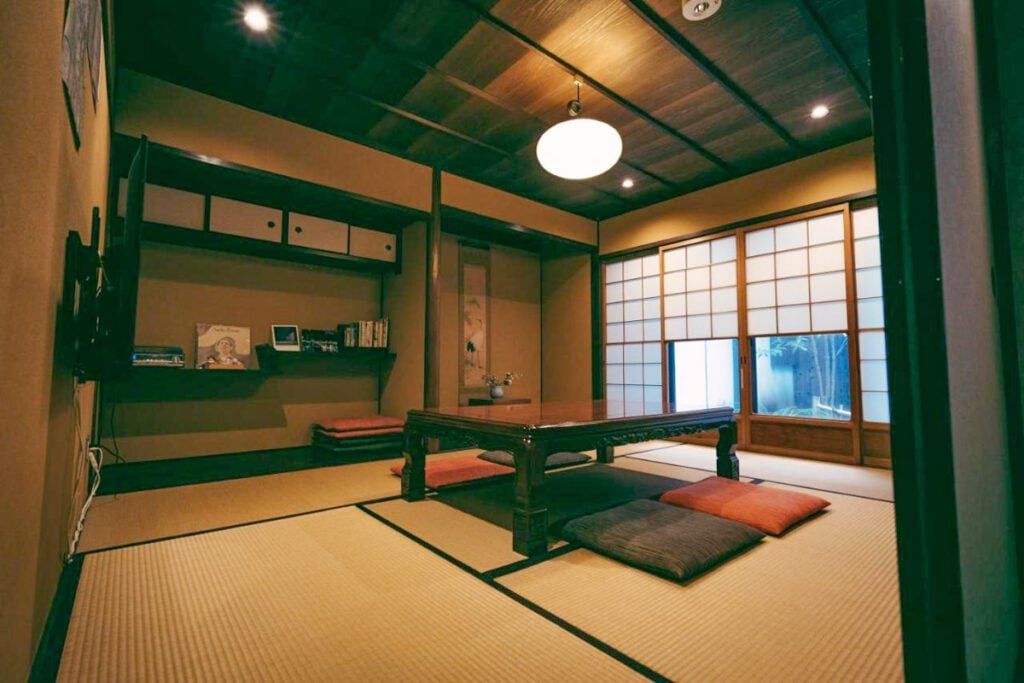There are so many famous landmarks in Japan, you could never see them all in one trip. We’re sharing our top recommended Japan landmarks and showing you where to find them so you can narrow down your list.
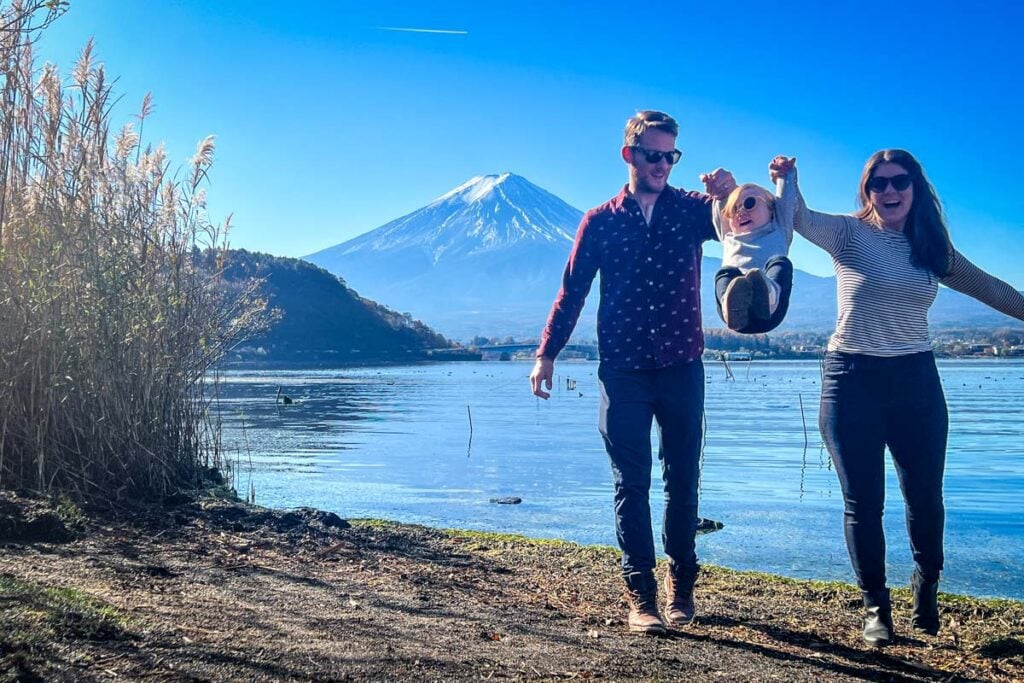
If you’re planning a trip to Japan and can’t decide which landmarks to put on your itinerary, we’re here to help!
Not only are we listing the most famous Japan landmarks, but we’re also telling you which ones are overrated (in our opinion) and which ones are worth the effort to see.
Plus, we’re throwing in a free map so you can plan your route around your own list of must-see landmarks!
Our 6 favorite Japan landmarks
While this article is a big ol’ list of famous Japanese landmarks, these 6 are our top recommendations that we don’t think are overrated and are worth the effort to visit.
There’s no way you can see all of these in one trip to Japan, so here are the ones we’d recommend prioritizing.
- Mount Fuji
- Fushimi Inari
- Omoide Yokocho and Golden Gai
- Nachi Waterfall
- Shirakawa-go
- Jigokudani Snow Monkey Park
Japan landmarks guide
Related: Japan is known for a whole lot more than its landmarks. Check out this super fun list of things Japan is famous for!
Map of landmarks in Japan
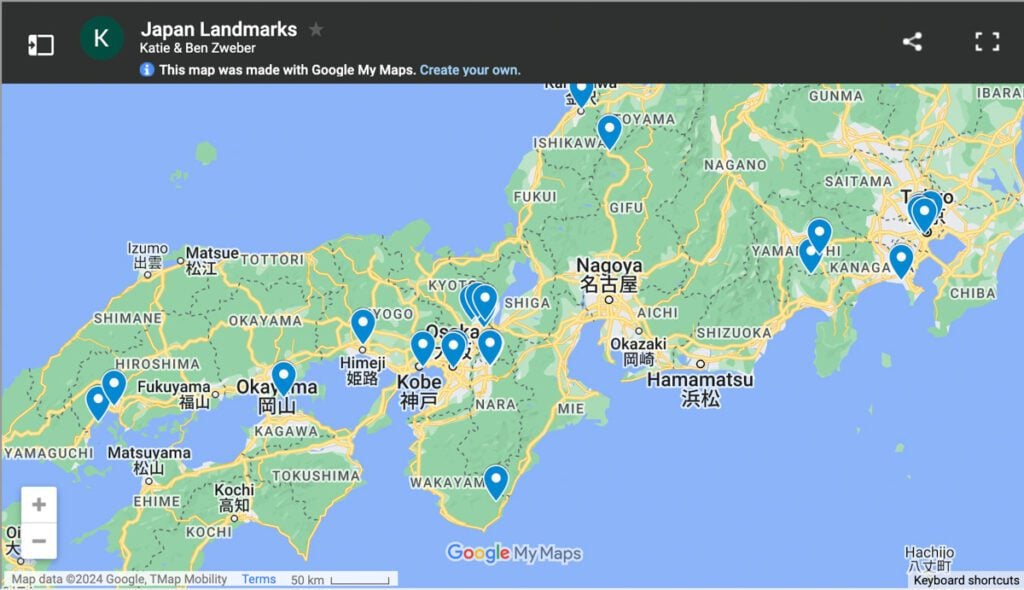
Click on the map above to explore famous landmarks in Japan, or keep scrolling for all the details.
1. Mount Fuji

- Location: Central Honshu
- Google Maps location
Seeing Mount Fuji in all her glory is at the top of many travelers’ Japan bucket lists, and for good reason – this iconic mountain is basically synonymous with Japan and is truly incredible to see in person.
However, it’s good to know that Mount Fuji is known for being shy. In fact, the mountain was completely hidden in the clouds during our first two visits to Japan. But on our third trip, she proudly showed her face and it was worth the wait. We finally got to see for ourselves what all the hype is about!
We have a Mount Fuji day trip guide that is packed with info on how, when, and where to catch a glimpse of the famous peak, as well as other fun things to do in the area and some mind-blowing facts we’re betting you didn’t know.
Best places to see Mount Fuji

On a clear day, you can glimpse Mount Fuji in the distance from Tokyo. However, if you want a closer up view, here are some of the most iconic:
- Hakone: This small town situated on Lake Ashin is a great place to see Mount Fuji and relax in an onsen at one of the many guesthouses.
- Five Lakes region: Like the name infers, this region covers 5 lakes, all of which have fabulous views of Mount Fuji.
- Fujiyoshida: If you want a view of Fuji set against an urban cityscape in a nature-meets-city juxtaposition, this is the nearest town to the mountain and makes a really unique sight. The iconic photo from this city is on Honcho Street.
Best time to see Mount Fuji
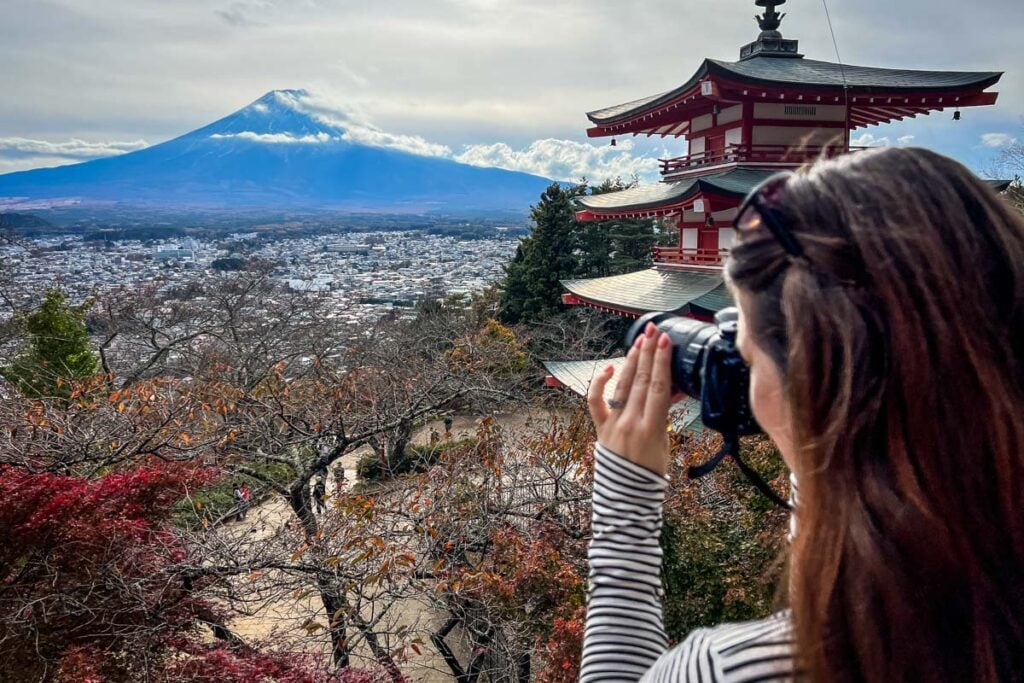
Statistically speaking, you will have the best chance of seeing Mount Fuji between the months of October and February. Conversely, the worst chance of visibility is in July.
That said, our first visit to Japan was in early February (aka a month with one of the best chances of visibility), and it was completely covered in fog during our entire stay.
Moral of the story: you can never guarantee that you’ll be able to see this notoriously shy mountain, so be sure to have a few cloudy day activities in mind (and a good attitude!) just in case.
Our thoughts: We think Mount Fuji is particularly photogenic in autumn, with fall foliage all around and with a good chance of seeing the peak covered in a blanket of white after a snow storm.
2. Fushimi Inari Shrine
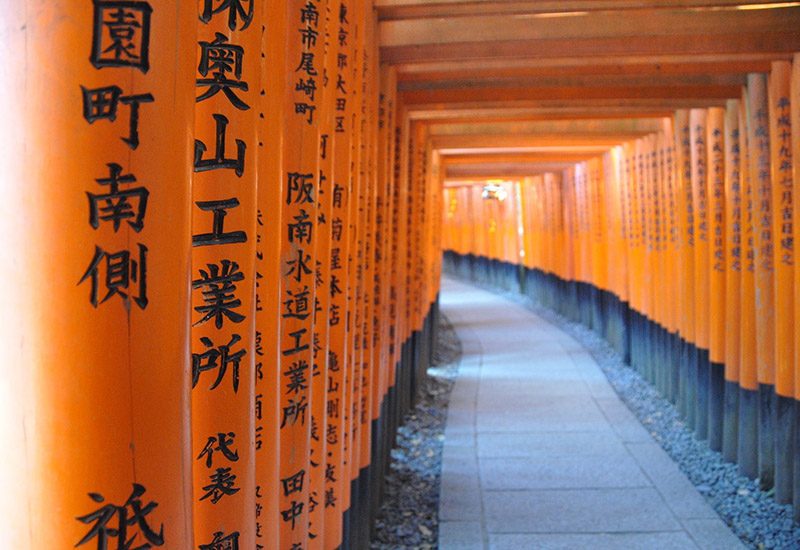
- Location: Kyoto
- Google Maps location
Featuring more than 10,000 orange torii gates, Fushimi Inari is a shrine dedicated to Inari, the Shinto god of harvests, rice, agriculture, and worldly success.
There are some 30,000 shrines devoted to Inari around Japan, but Fushimi Inari is the most well-known and most important of them all.
While it is (very) popular, Fushimi Inari is still absolutely worth visiting.
Follow the pathway beneath thousands of orange-painted gates as the sunlight streams through the spaces between them.
It is truly a magical experience that we can’t quite describe.
Psst! We have 2-day Kyoto itinerary that includes a visit to Fushimi Inari and has all the planning already done for you!
Tips for visiting Fushimi Inari
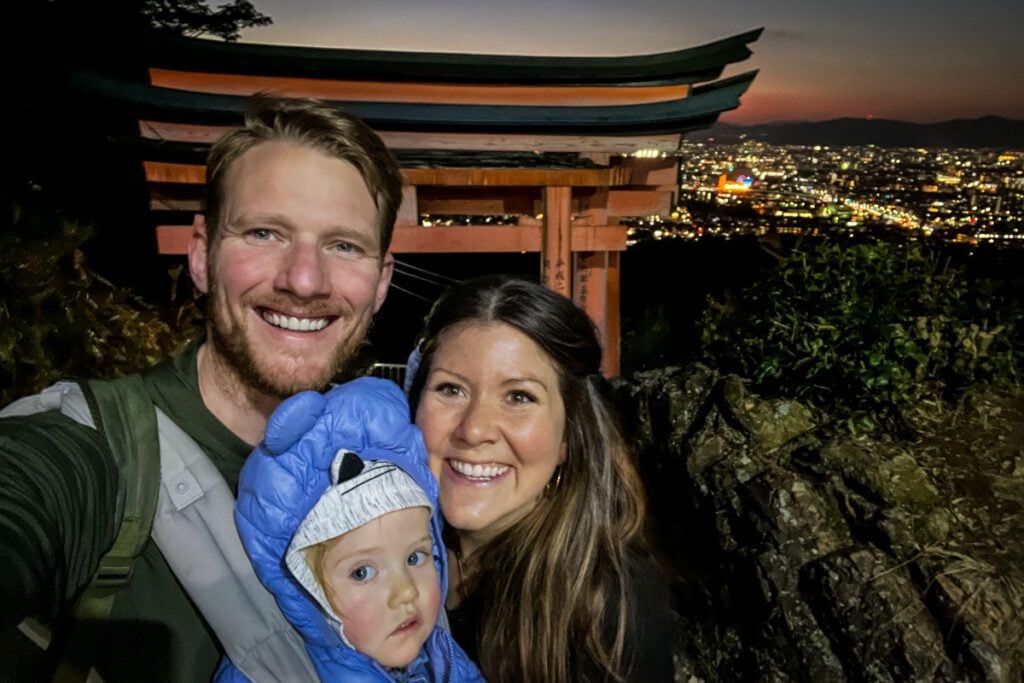
- There is no entry fee, making Fushimi Inari one of the best things to do in Kyoto for FREE.
- Since Fushimi Inari gets crowded, try to get here as early as possible.
- There is a shrine mid-way where you can write a wish on a small wooden fox “ornament” to hang with the thousands that other visitors have left.
- If you follow the entire pathway through the torii, it is roughly 2.8 miles (4.5 km) in total. You can do all or part of the walk, but it’s good to know that there is a moderate incline (550 feet / 168 meters).
- Along the way, you will get panoramic views over Kyoto.
3. Omoide Yokocho and Golden Gai

- Location: Tokyo
- Google Maps location
These two areas are Tokyo’s most famous yokocho, aka mazes of narrow alleyway bars and restaurants.
Omoide Yokocho is a narrow maze of izakayas dating back to the late 1940s, following World War II. Not unlike today, you’d find these backstreets full of patrons dining on yakitori skewers and washing it down with cheap beer. However, back then it was kind of a sketchy area, and I don’t think I need to explain how it earned the nickname “piss alley”.
Today, you’ll still find vegetable and chicken skewers grilling over open flame in front of dated stands, and charcoal smoke filling the alleyway. But it is no longer a dangerous area.
These days, many stands have English on their menu and Omoide Yokocho draws both hungry businessmen and international tourists each evening. While times have changed, the prices remain cheap and the atmosphere inviting.
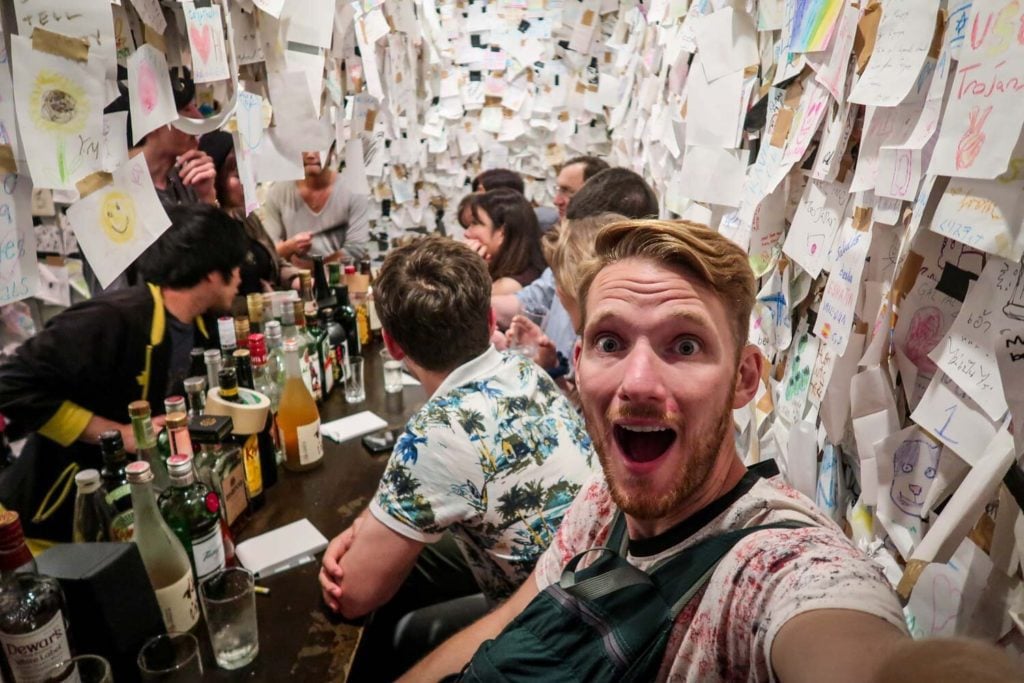
Another collection of small bars, Golden Gai has a somewhat similar vibe to nearby Piss Alley. However, it is focused more on drinks than food.
Each pocket-sized bar has its own personality. During one night out, you can hop from one izakaya to another on your own little pub crawl. Just know that most bars here open around 8 p.m. so Golden Gai is more of a late-night experience.
You can explore these old-school alleyways on your own, but if you’d rather join a guided tour led by a local, we recommend the Magical Trip Bar Hopping Night. We did this tour in 2019 and it was one of our most unforgettable nights in Tokyo!
4. Nachi Waterfall
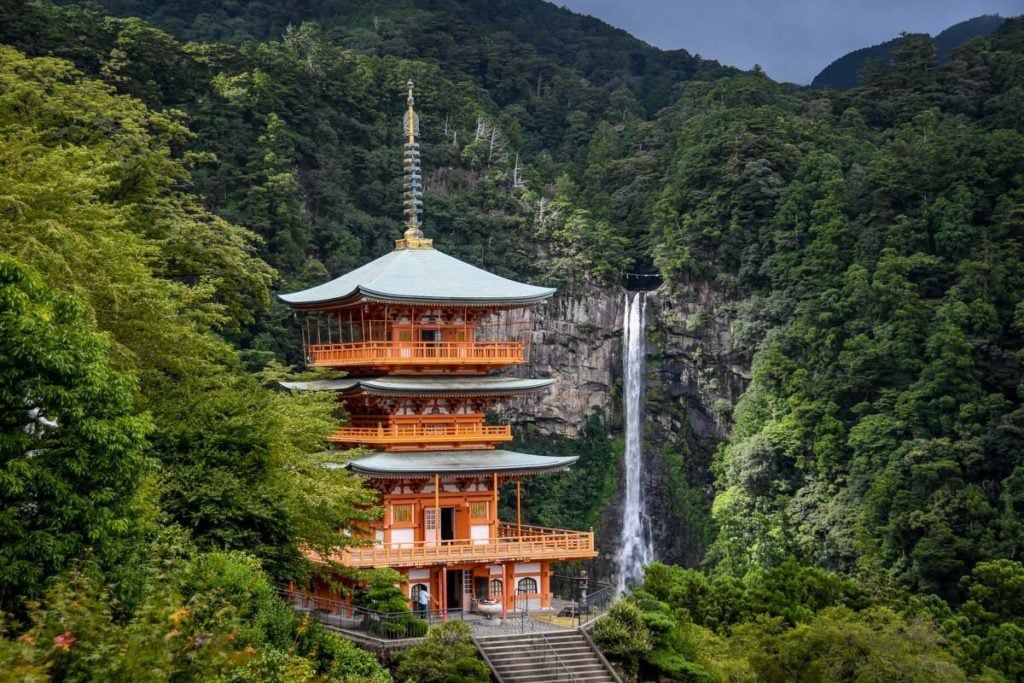
- Location: Kumano Kodo Trail
- Google Maps location
Buried in a sacred primeval forest at the end of the Kumano Kodo Trail, Japan’s tallest single-drop waterfall inspires both mystery and wonder as water barrels over an uninterrupted, 133-meter (400-foot) drop.
Nachi Falls is in a World Heritage protected region with numerous religious sites that should absolutely be included in your visit to the waterfall.
Kumano-nachi Taisha, Hiro Shrine, and Seigantoji Temple honor the deities dwelling in the falls as well as showcase the harmonious relationship between Japan’s ancient spiritual beliefs.
Good to know: The vermillion red pagoda with Nichi Falls cascading in the background is best photographed in the main courtyard of Kumano-nachi Taisha (Nachi Grand Shrine).
It’s free to walk all the way up to the falls, but it costs 300 yen to get a closer look on the viewing platform. The view from the bottom was pretty good, so we didn’t feel the need to visit the platform.
5. Shirakawa-go

- Location: Gifu Prefecture
- Google Maps location
Nestled at the base of the sacred Mount Hakusan is a fairytale village brought to life with beautiful gasshô-zukuri style farmhouses.
The style refers specifically to the steep, thatched roofs protecting the houses, meaning “like prayer hands”.
Shirakawa-go comprises many smaller villages, but Ogimachi is the most spectacular with its houses standing since the 1800s. Head to the Shiroyama Observation Deck for the best views of all 100+ houses in this village.
Good to know: Several of the houses here serve as guesthouses that make for a memorable stay!
Each house is both a museum and prime example of master carpentry, since they’re all made without nails and have survived centuries of weathering and natural disasters.
It’s important to note that some houses are residential, but there are others that are open to the public:
Insider Tip: Tochi mochi, gohei dango, and hida beef are all local delicacies you must try when in the region! You can find them at several food stalls dotted across the village.
6. Jigokudani Snow Monkey Park
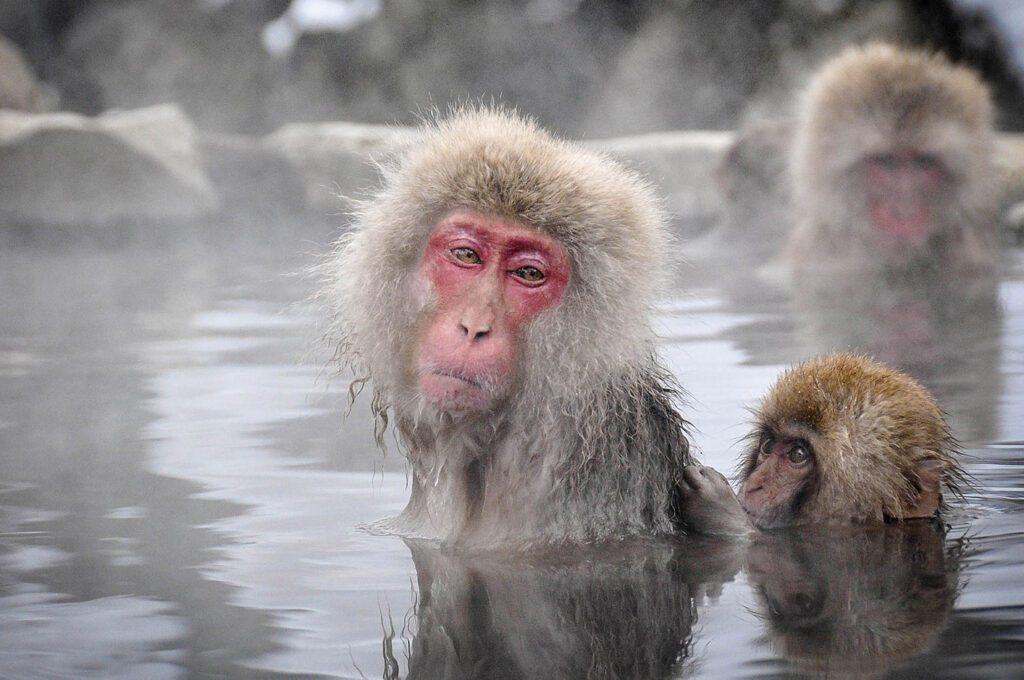
- Location: Nagano Prefecture
- Google Maps location
Nestled in a river valley, Japanese macaques congregate in the hot pools of Jigokudani Monkey Park during the cooler months of the year.
Your heart will melt seeing moms cuddling their babies and young monkeys playing together. They each have their own personalities, and observing them is truly a sight to behold.
Psst! This is a great experience to add to your itinerary for a family trip to Japan!
We have a complete guide to Jigokudani Monkey Park that’s packed with important info and insider tips to plan the perfect visit.
7. Shibuya Crossing
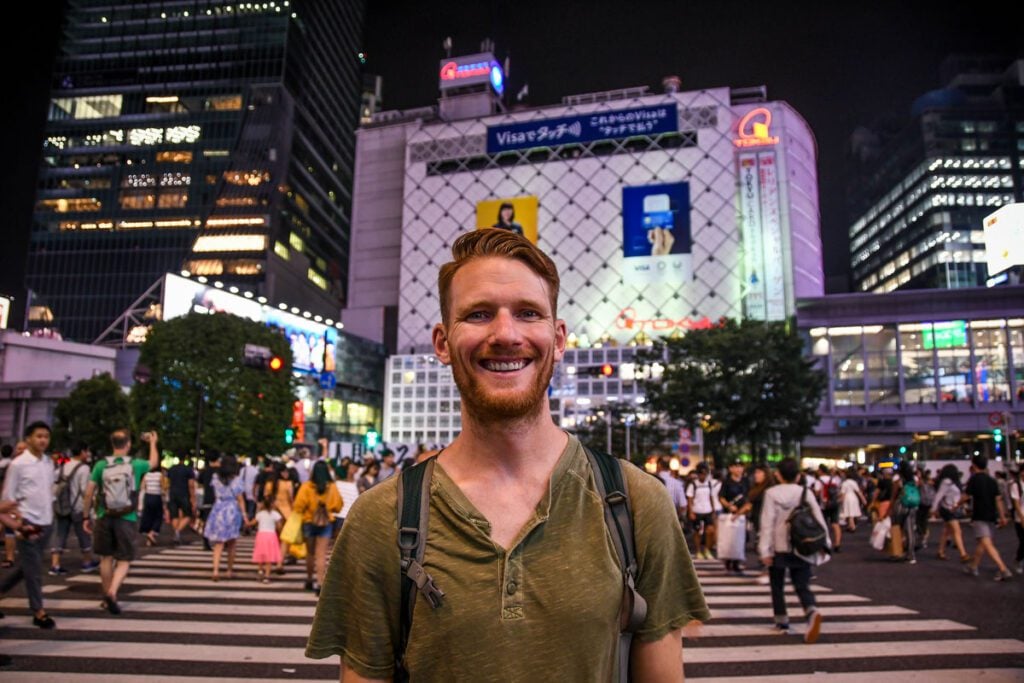
- Location: Tokyo
- Google Maps location
Known as the busiest intersection in the world, the Shibuya crossing is everything I imagined Tokyo to be: neon lights aglow and people walking every which way in organized chaos.
The intersection where five streets converge is known famously as “the scramble” and should be a must on your Tokyo to-do list. Bonus: it doesn’t take long to get here and experience the madness.
View the crossing from above at Shibuya Sky
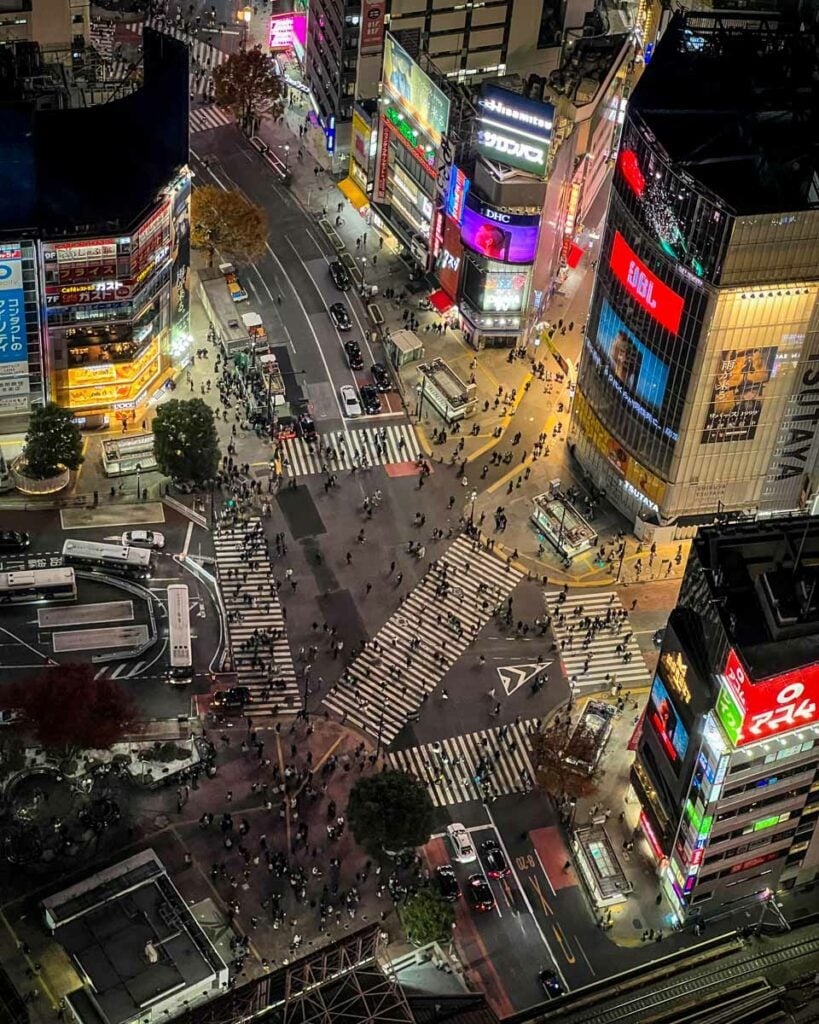
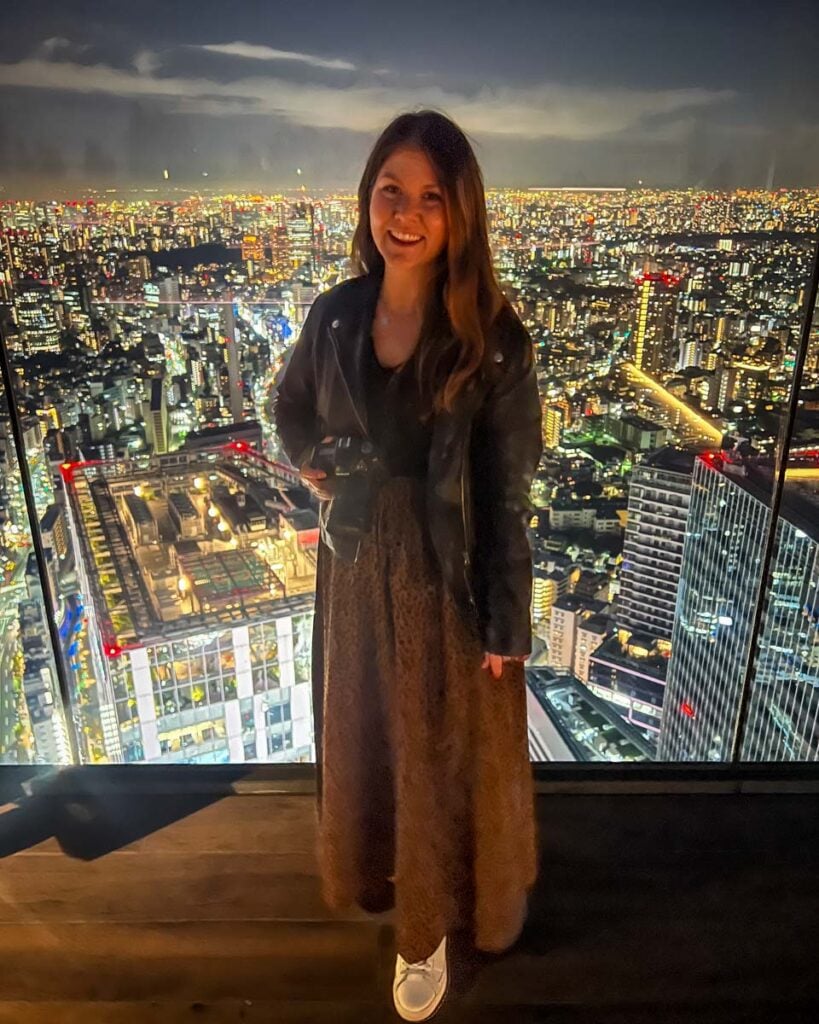
An alternative to having eyes on the ground is viewing the chaos from above. The Shibuya Sky rooftop observatory is the newest addition to central Tokyo’s lineup of rooftop views.
At approximately 230 meters (~755 ft) above the intersection, it’s the tallest skyscraper in Shibuya. The open-air observatory offers 360º views of the city and on a clear day, you can even catch a glimpse of Mount Fuji in the distance.
- Entrance fee: 2,000 yen for adults (~$15 USD); 1,800 yen if you book online in advance (we’d highly recommend booking in advance because it sells out almost every day)
- Hours: 10 a.m. to 10:30 p.m.
Good to know: There’s also a Starbucks that overlooks the madness. Though we will warn you, the Starbucks is something of an attraction itself, and is always crowded. It is even said to be the busiest location of this coffee chain in the world! It is currently closed and is undergoing renovations, so instead, head to the 8th floor rooftop observatory of MAGNET. You must buy a drink (starting at around 500 yen) to enter.
8. Itsukushima Shrine
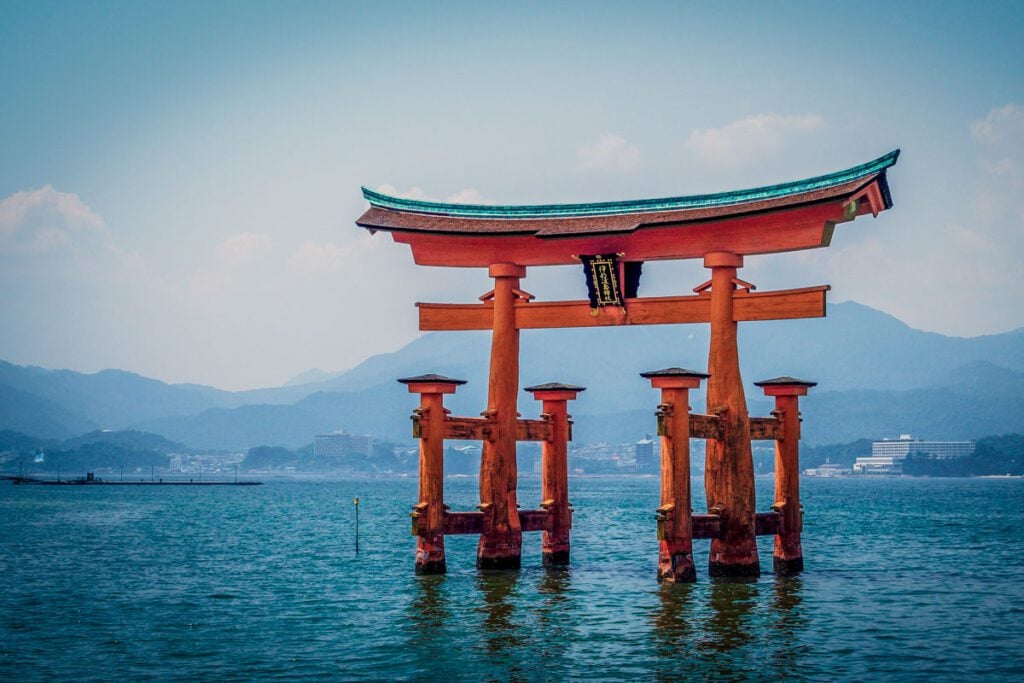
- Location: Hiroshima
- Google Maps location
Located on a small islet in Hiroshima Bay, the name Itsukushima means “island of worship”. Also known as Miyajima, it has been a sacred site for centuries and is one of the top things to do in Hiroshima.
Itsukushima Shrine comprises multiple buildings, including a prayer hall, main hall, and theater stage, all connected through a series of boardwalks.
But the main allure is the massive vermilion torii gate which, during high tide, appears to float upon the waves of the Seto Inland Sea.
The torii gate is one of the defining views of Japan and the buildings within the shrine hold both National Treasure and UNESCO World Heritage Site statuses.
Entry fee: 300 yen ($2), or combined tickets for shrine and Treasure Hall for 500 yen ($4)
9. Arashiyama Bamboo Grove
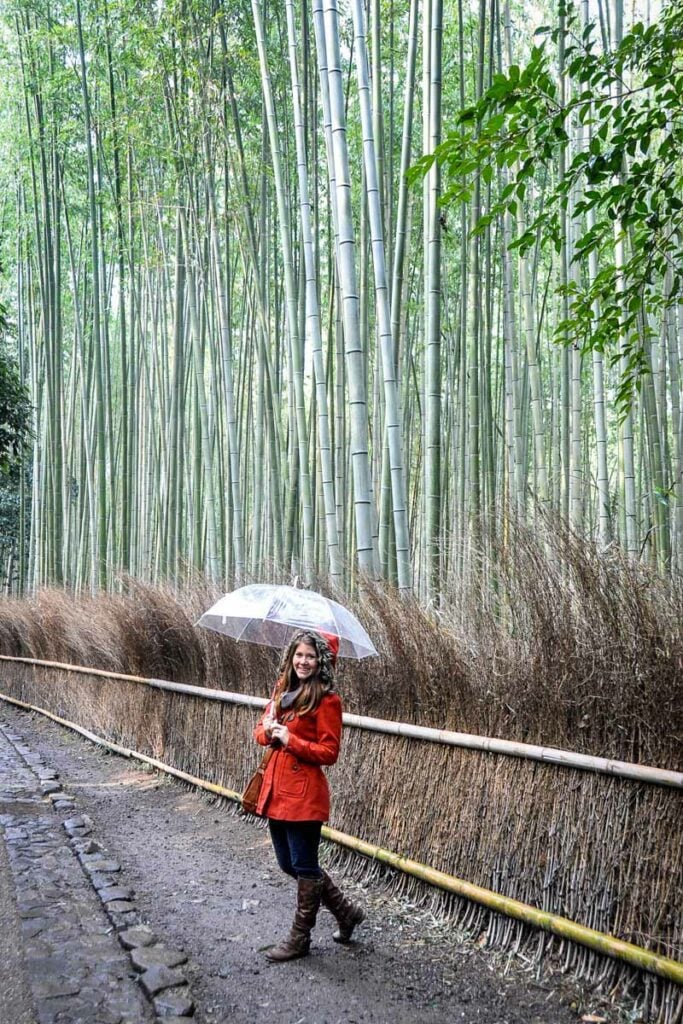
- Location: Kyoto
- Google Maps location
Strolling through a forest of towering bamboo stalks that sway ever so slightly in the breeze creates an almost otherworldly atmosphere.
While photos online may make it seem like this is a tranquil oasis, I can guarantee that you will find it to be very crowded at almost all hours of the day. That said, it is still one of those places you have to visit in Kyoto.
As long as your expectations are managed, Arashiyama Bamboo Forest is still worth a visit – especially since there’s a much less crowded bamboo forest nearby…
Less crowded alternative: The smaller bamboo grove at the Adashino Nenbutsuji temple is much, MUCH less crowded. The temple itself is also really cool and worth exploring. Just know that it costs 500 yen per person to enter the temple (and therefore the bamboo grove).
10. Daibutsu (“Great Buddha”)

- Location: Kamakura
- Google Maps location
Said to be constructed in 1252 from melted Chinese coins, the bronze Great Buddha of Kamakura is one of the most fascinating historical landmarks in the country and one of the best day trips from Tokyo.
The 11.3-meter (37 feet) tall, 121-ton Kamakura Daibutsu originally stood proudly within the walls of a large temple hall. But frequent typhoons and tsunamis during the 14th and 15th centuries, as well as possible thievery, left the once gold-plated Buddha tarnished and stripped to its bronze base.
Today, the statue remains in the grounds of Kotoku-in Temple, a symbol of Kamakura and how much it has endured, still standing calmly and beautifully.
For a small donation, you can enter inside the Buddha to see how it was cast by the unknown original sculptor.
Entry fee: 300 yen ($2)
11. Osaka Castle
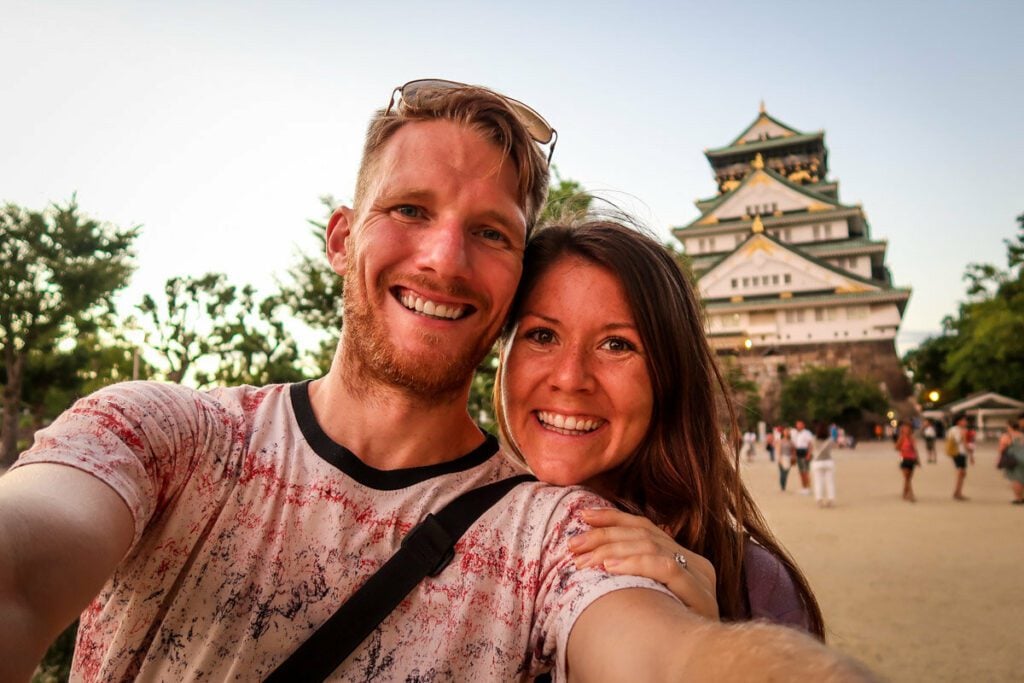
- Location: Osaka
- Google Maps location
Situated in the midst of the bustling city of Osaka, this castle is a must on most travelers’ itineraries. Cross over not one — but two! — moats to reach the castle grounds, which you can explore free of charge.
If you want to enter the castle, you’ll need to pay a 600 yen entry fee. The interior has been turned into a museum and, in our opinions, was a bit underwhelming.
The best part of the 600 yen admission (for us) was the observation deck on the 8th floor. It offers nice 360-degree views over the city.
Nishinomaru Garden
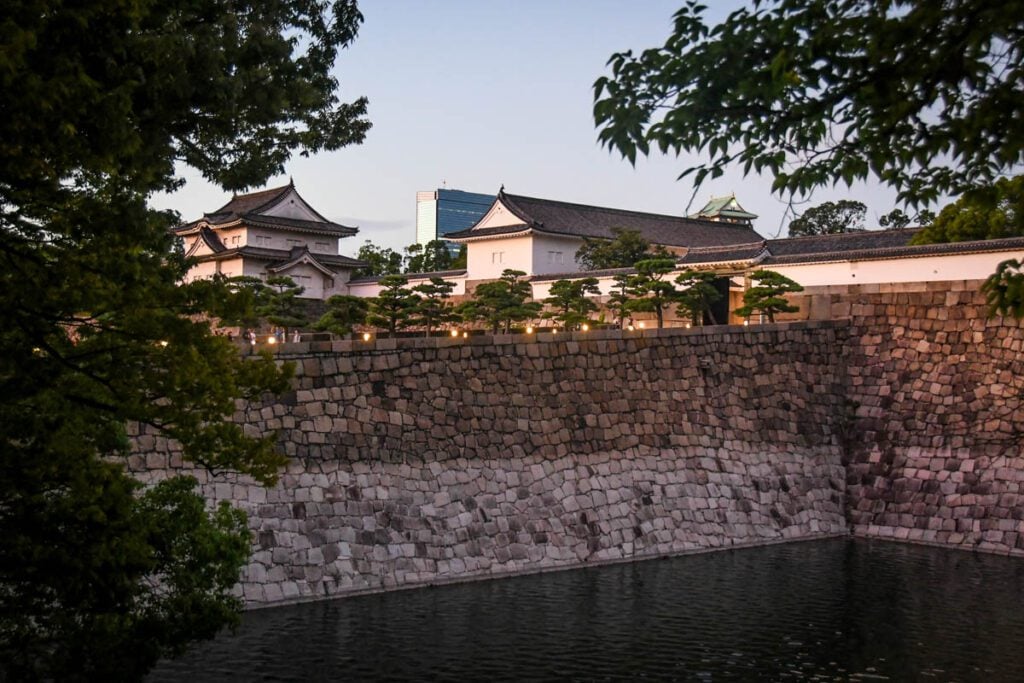
Surrounding the castle lies the Nishinomaru Gardens, which are one of the most popular spots in the city for cherry blossom viewing in the springtime. It also offers views of the castle and lots of green space that is nice any time of year.
- Cost: Free to enter castle grounds; 600 yen admission to enter the castle; 200 yen to enter the Nishinomaru Gardens (350 yen during cherry blossom season)
- Hours: Castle and garden hours are the same — 9:00 a.m. to 5:00 p.m. (entrance until 4:30 p.m.); extended hours on holidays
12. Kinkaku-ji (“Golden Pavilion”)
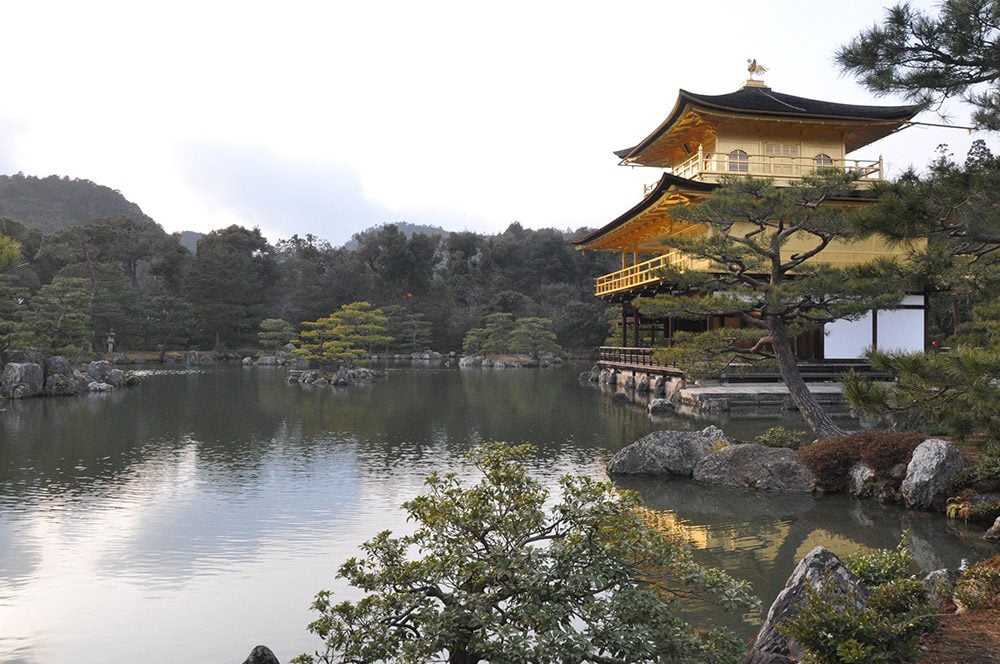
- Location: Kyoto
- Google Maps location
Also known as the “Golden Pavilion”, Kinkaku-ji Temple is one of the most famous sights in Kyoto, and it is popular for good reason.
The pavilion showcases three unique types of architecture: the Heian Period on the ground floor, houses of the samurai on the first floor, and style reflection of Zen temples on the second floor.
Its exterior is completely covered in gold leaf and makes a stunning reflection in the lake beside it.
It is definitely worth a visit, but be warned – the grounds are teeming with tour groups at practically all hours.
The morning is said to be the least busy, but dusk the most beautiful. Viewing the golden temple as the sun starts to set is spectacular.
- Entry fee: 400 yen ($3)
13. Nara Park

- Location: Nara
- Google Maps location
Just a short 45-minute train ride from both Osaka and Kyoto, tourists flock to the ancient capital of Nara to meet the famous bowing deer.
According to the traditional Shinto religion, the deer in Nara Park are said to be messengers of the gods, and are therefore sacred animals that are allowed to roam freely. And the 1,000-plus deer who call the city and Nara Park home will not flee when they see you.
In fact, it’s much the opposite. They have learned to bow to humans in exchange for food. Yep, you read that right: they will actually bow. And they are everywhere.
We’ve been to Nara Park twice now (in 2019 and 2023), and while we noticed it is much busier on our most recent visit than it was just a few years ago, it is still worth adding to your trip as there aren’t any places in the world quite like it.
Note: On our first trip to Nara, we decided not to feed the deer, but we did buy a few crackers when we returned with our daughter in 2023. As with any animal encounter, we recommend doing a little research and making your own observations before deciding whether or not to partake.
14. Senso-ji

- Location: Tokyo
- Google Maps location
Famous for its giant red lantern, Senso-ji Temple is a top sight to see in Tokyo. And since it’s on just about every traveler’s itinerary, expect this area to be crowded. Really crowded! But even so, it is worth a quick visit.
This Buddhist temple is located in Asakusa, a district in downtown Tokyo known for its historical sights. Built in 645, Senso-ji is Tokyo’s oldest temple.
If you’re looking for souvenirs, you’ll find no shortage of stands in this popular tourist zone, selling everything from Japanese snacks to folding fans.
15. Philosopher’s Path
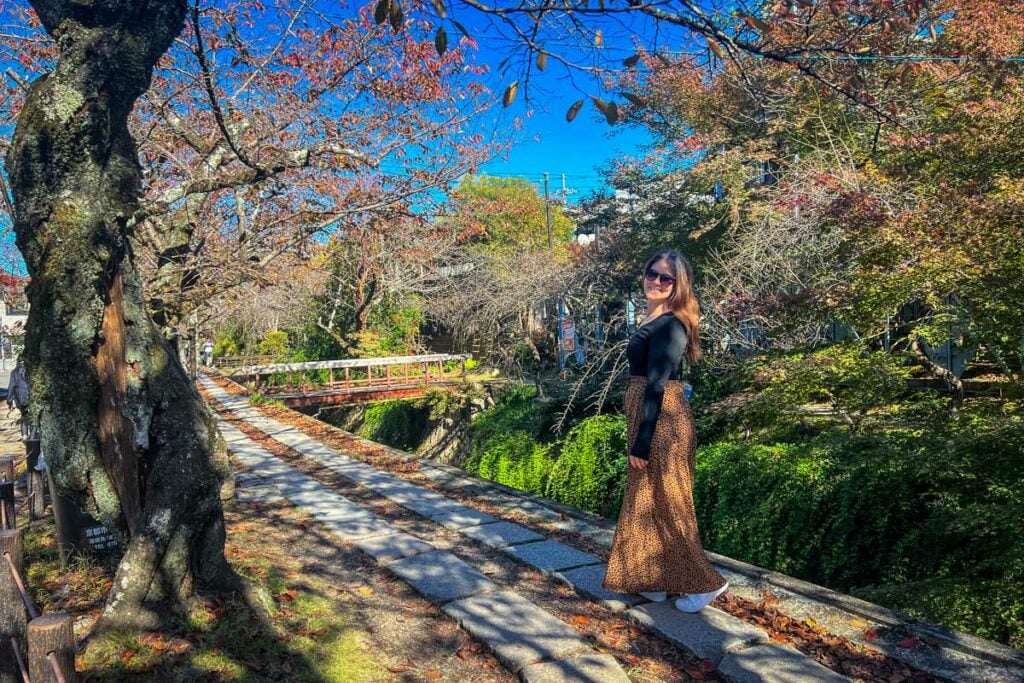
- Location: Kyoto
- Google Maps location
Follow the stone laid steps of Japan’s famous philosopher, Nishida Kitaro, who foraged this path daily commuting to Kyoto University.
The trail is one of the best things to do in Kyoto on its own, but it also connects three magnificent temples you should meander to see: Ginkaku-Ji, Eikan-do/Zenrin-ji, and Nanzen-Ji Temple.
The pathway follows a canal that is lined with hundreds of cherry trees, creating a dreamy pink and white tunnel during Japan’s cherry blossom season.
Begin your stroll at Ginkakuji (Silver Pavilion) and follow the trail, Tetsugaku-no-michi, for about a mile until you reach the Nanzenji neighborhood.
16. Meiji Shrine
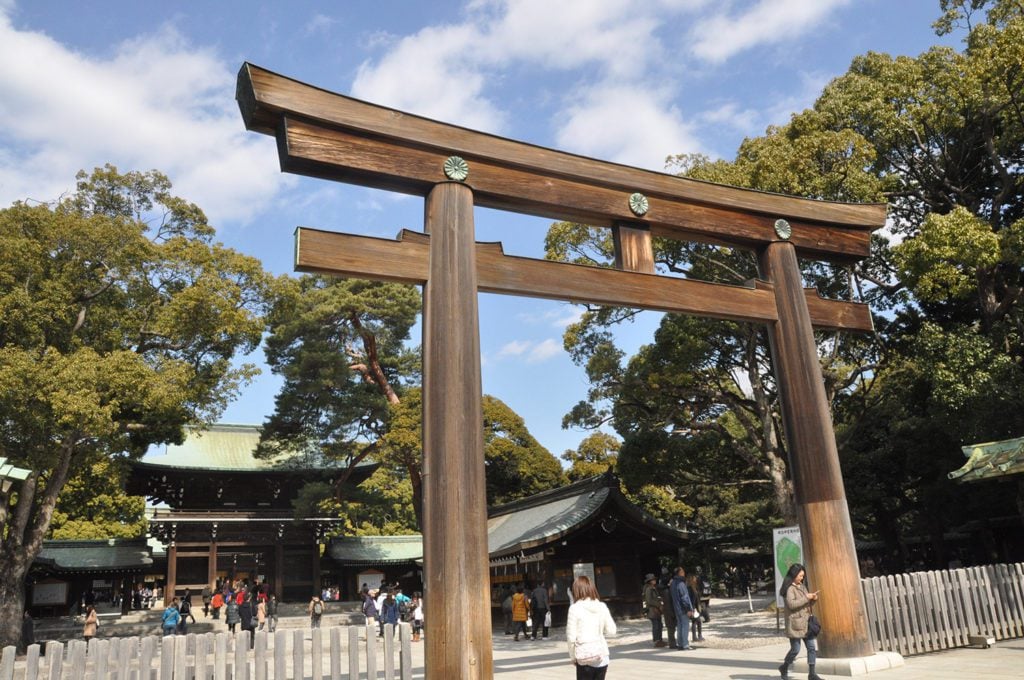
- Location: Tokyo
- Google Maps location
Not far from downtown Tokyo, the Meiji Shrine is an escape from the city’s bustling streets.
Unlike many of Japan’s shrines, the structures here have not been brightly painted. Instead, the wooden gates were left in their natural state, making these forested grounds all the more serene.
Walk on wooded pathways and explore the grounds of this simple, but beautiful shrine. If you visit on a weekend, then you might even be lucky enough to see a Japanese wedding ceremony take place like we did!
17. Himeji Castle

- Location: Himeji
- Google Maps location
Known as one of Japan’s 12 original castles because it was never destroyed by earthquake, war, or fire, Himeji Castle is both a National Treasure and World Heritage Site.
It’s nicknamed the “White Heron Castle” due to its elegant, white exterior and how it takes on the appearance of a bird taking flight from its hilltop location.
The castle is also a renowned cherry blossom viewing location, where thousands of sakura bloom among the grounds.
Explore the 400-year old seven-story castle for views over Himeji. Afterward, walk through the Edo-period style Kokoen Garden that beautifully illustrates the changing of Japan’s seasons.
- Entry fee: 1,000 yen ($8)
Good to know: A thorough visit through the castle takes 3-4 hours.
18. Chureito Pagoda
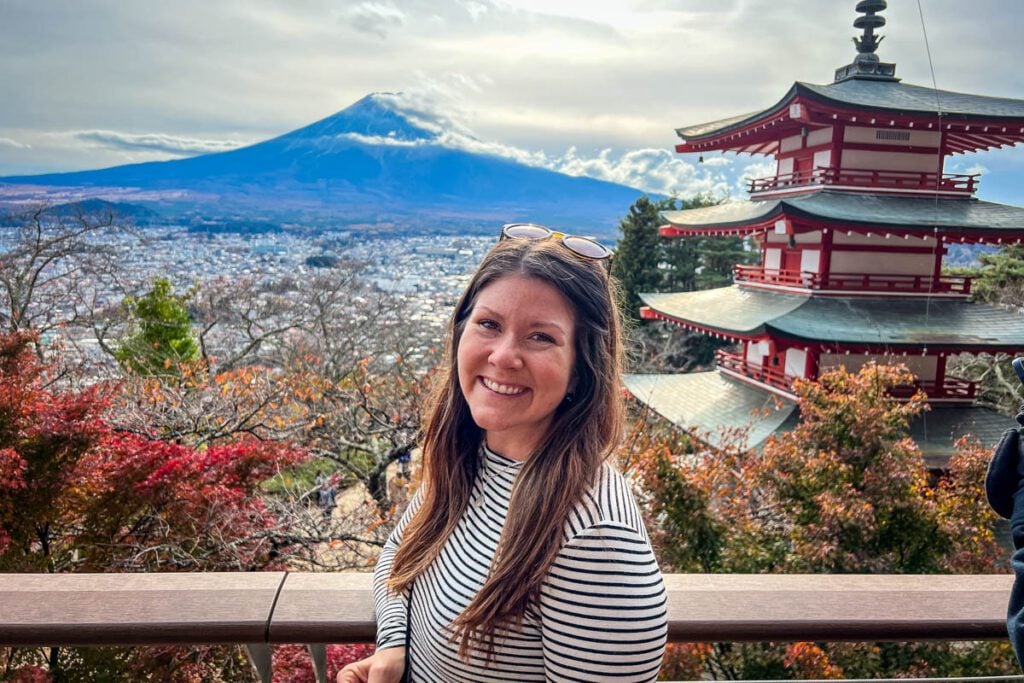
- Location: Fujiyoshida
- Google Maps location
The vermillion 5-tiered Chureito Pagoda sits within Arakurayama Sengen Park, famously framed against the backdrop of Mount Fuji. This is where you get that postcard-perfect shot – you know the one I’m talking about.
The scene is particularly spectacular in spring, when the pagoda is surrounded by a sea of pastel pink-and-white cherry blossoms, and in autumn, when the changing leaves create a tapestry of fiery crimson, orange, and gold. Just know that these are popular times to visit and the park gets very busy.
19. Hiroshima Peace Memorial

- Location: Hiroshima
- Google Maps location
This open park in the center of Hiroshima is dedicated to the victims of the world’s first atomic bomb – not only those who died in the blast, but all who have felt the effects for generations in the forms of trauma and exposure to radiation.
Through artifacts, personal belongings, and stories of victims of the catastrophic attack, the museum demonstrates the inhuman nature of nuclear warfare while spreading the message of “No More Hiroshimas”.
In addition to the museum, the park houses an array of monuments, art installations, and memorials:
- Children’s Peace Monument: Filled with paper cranes, this monument is dedicated to all the children who lost their lives due to the bomb.
- Fountain of Prayer: Situated at the museum entrance, this fountain is dedicated to all those who were lost. It is said that after the bombing, many victims lay crying out for water in their final moments, so this fountain is meant to be a somber tribute.
- Peace Memorial Hall for the Atomic Bomb Victims: This quiet hall is meant to be a place where visitors can read memoirs and poems and watch testimonial videos from survivors.
- The Cenotaph: This arched concrete structure is hard to miss. Inside it are registries of all known victims of the atomic bomb, as well as an etched inscription that reads: “Let all the souls here rest in peace, for we shall not repeat the evil.”
- Peace Flame: Near the center of the park, you’ll see a flame that is said to stay lit until all nuclear weapons on earth are gone.
- Atomic Bomb Memorial Mound: This grassy mound holds the bodies of 70,000 people who were mass cremated.
- Peace Bell: You can ring this bell, which sits over a lily pad-covered pond.
- Cost: Entry is just ¥200 ($2 USD) for adults
- Hours: Open 7 days a week between 8:30 a.m. and 6:00 p.m.
20. Dōtonbori
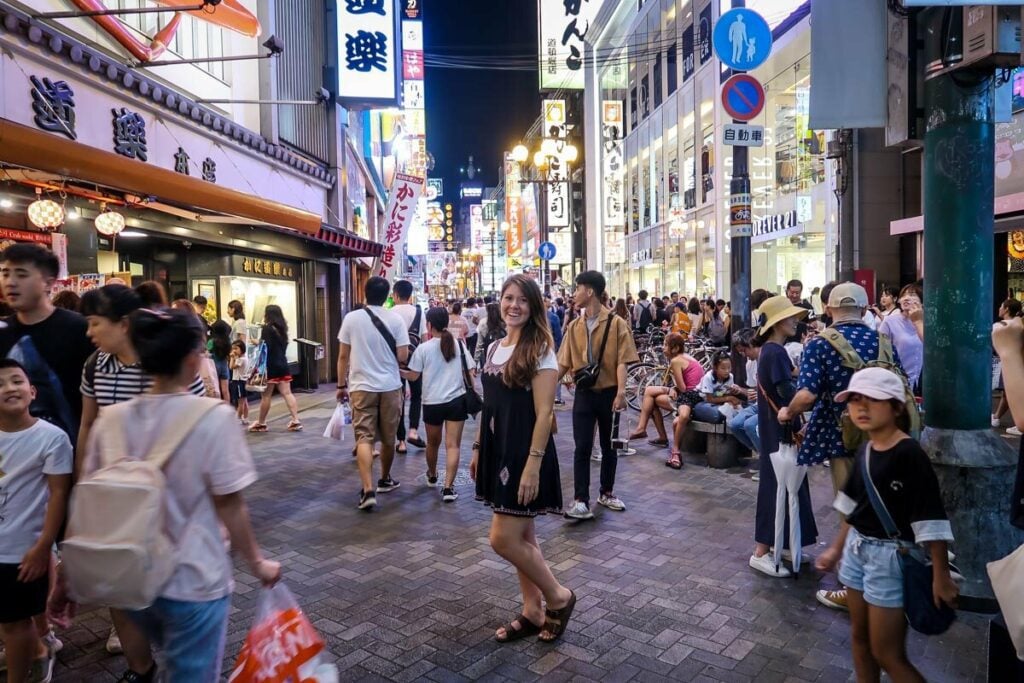
- Location: Osaka
- Google Maps location
Known for its ever-glowing neon lights, thick crowds, and endless food options, a visit to this lively district should definitely be part of your Osaka itinerary.
In order to get the full experience, get there after the sun goes down and the lights shine brightest. There is a palpable buzz to this place, and your senses will surely be on overdrive. Walk up the main drag, sample food along the way, and people-watch.
While in Dotonbori, stop into Don Quijote, a famous Japanese discount chain that sells literally everything you could ever need. Just walking inside one of these stores is an experience in itself, especially the Dotonbori location, which even has a ferris wheel inside!
Oh, and also do the Japanese thing and take a photo with “Glico Man”, the runner depicted on a neon billboard crossing a finish line. This iconic image was installed in 1935 by a candy company (Glico), and it is now the symbol of Osaka amongst Japanese people.
Insider Tip: While you’re in the area, wander off the main path and through narrow streets towards Hozen-ji Yokocho, an alleyway that still retains traditional charm and is much quieter than Dotonbori’s main drag. Be sure to pause at the lantern-lit Hozen-ji temple, for which this alley gets its name.
21. Machiya

- Location: Kyoto
These traditional wooden townhouses in Kyoto offer a glimpse into the lives of merchants prior to WWII. Because Kyoto wasn’t bombed during the war, many of the original machiya still stand today. Some remain residential, while others now house restaurants, shops, and guesthouses.
If you want to see machiya, then take a walk around the Nishijin textile district. Otherwise, book a machiya stay for a truly unique experience.
Budget: 100 Year old Machiya Guest House
This charming guest house transports you back in time with its tatami interior and traditional Japanese garden onsite. Enjoy peace and stillness while still being close to many shops, stalls, and sites in Kyoto.
Splurge: Kotone Machiya-Inn
This beautifully restored guesthouse in the heart of Kyoto offers elegant, minimalist design as well as a traditional courtyard.
22. Tokyo Tower

- Location: Tokyo
- Google Maps location
Tokyo Tower could be described as the Eiffel Tower dressed as a candy cane. When the 333-meter (1,092-foot) red-and-white-striped structure was built in 1958, it was the world’s tallest tower, a symbol of Japan’s postwar rebirth.
Though no longer even the tallest tower in the city (Tokyo Skytree, 634 meters) — let alone the world — Tokyo Tower remains one of Japan’s iconic landmarks.
We personally were satisfied with seeing the tower from the ground, but you can also visit the Main Deck at 150 meters or take a Top Deck Tour which includes viewpoints at both 150 and 250 meters.
- Cost: ¥1,200 ($8 USD) for the Main Deck; ¥3,000 ($20 USD) for the Top Deck Tour
- Hours: 9 a.m. to 10:30 p.m. with last admission at 10 p.m. for the Main Deck and last Top Deck Tour at 9:30-10:45 p.m.
Insider Tip: Book your tickets for the Top Deck Tour in advance because they do sell out. Plus, booking online will save you ¥200 per ticket.
23. Kegon Falls
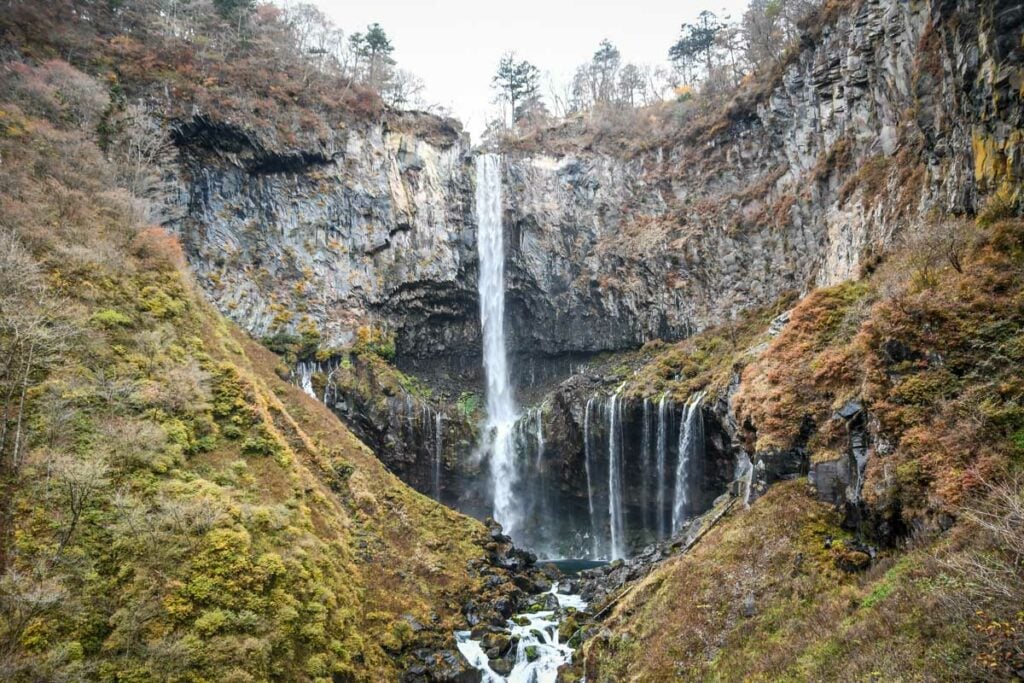
- Location: Nikko
- Google Maps location
Kegon Falls has been named one of Japan’s “3 most beautiful waterfalls” and is therefore an absolute must-see if you’re in the Nikko area.
Situated at the east edge of Lake Chuzenji, the towering falls plunges 97 meters (318 feet) straight down a sheer rock face into a pool surrounded by lush foliage.
There is a free viewpoint from which you can see this magnificent falls at no cost. However, the more impressive viewpoint can only be accessed by taking an elevator down nearly 100 meters.
- Cost: ¥570 (under $4 USD) for the elevator to the lower viewpoint
- Hours: the elevator is open March to November from 8 a.m. to 5 p.m. and December to February from 9 a.m. to 4:30 p.m.
24. Yayoi Kusama’s giant pumpkin sculpture

- Location: Naoshima
- Google Maps location
The works of Japanese artist Yayoi Kusama are inspired by an interesting muse: the humble pumpkin.
Though Kusama has several giant squash sculptures installed throughout the country, her most famous is located on the island of Naoshima in Kagawa Prefecture.
At 13 feet high, the red and black polka-dotted pumpkin is large enough to stand in. And since it’s hollow with a couple round openings, you can do just that. Bonus: this is an outdoor public art installation, so it’s free to visit.
25. Tōdai-ji
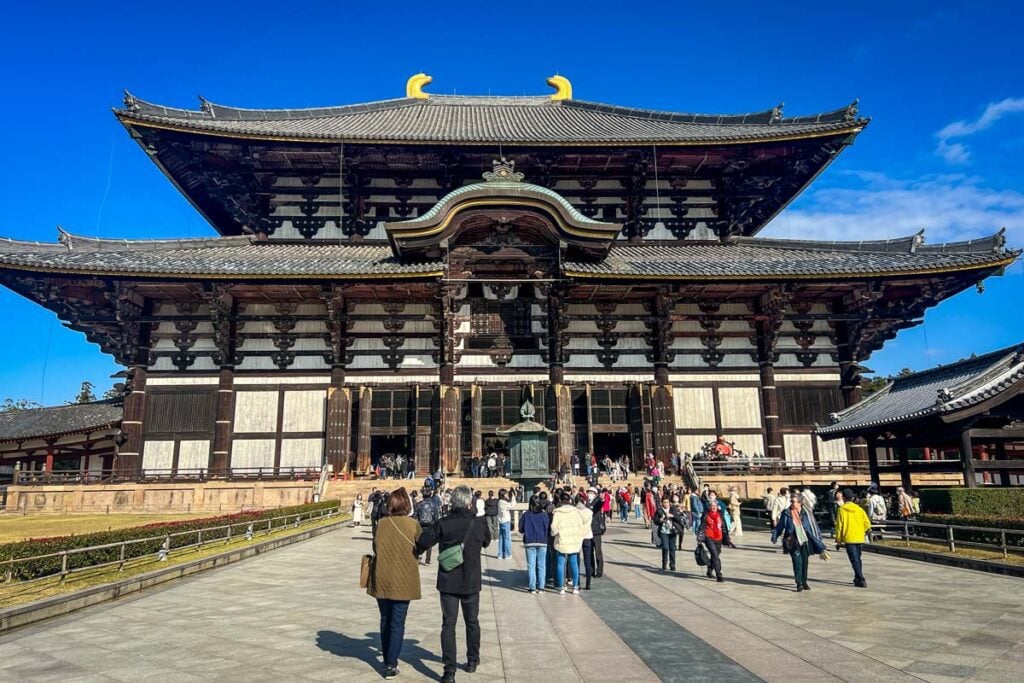
- Location: Nara
- Google Maps location
Built in the mid-700s, this Buddhist temple is perhaps the most popular attraction in Nara. Despite the crowds, it is well worth a visit and holds some surprising records.
Todai-ji Temple is known for its remarkable main hall, Daibutsuden, which is said to be the largest wooden structure in the world. And if that’s not enough, Todai-ji is also home to a bronze statue of Buddha that towers 15 meters tall and is said to be the largest bronze Buddha in the world.
Insider Tip: Since Todai-ji is very popular, we’d recommend getting here as early as possible to avoid crowds. Alternatively, the late afternoon (after 4 p.m.) tends to be less crowded, after most visitors have left Nara for the day.
Before you leave the grounds of Tōdai-ji, make a quick stop at the bell tower, which is said to be one of three famous bells in Japan and rings every day at 8 p.m.
- Cost: ¥600
- Hours: 7:30 a.m. – 5:30 p.m. (April – October); 8 a.m. – 5 p.m. (November – March)
26. Kenrokuen Garden
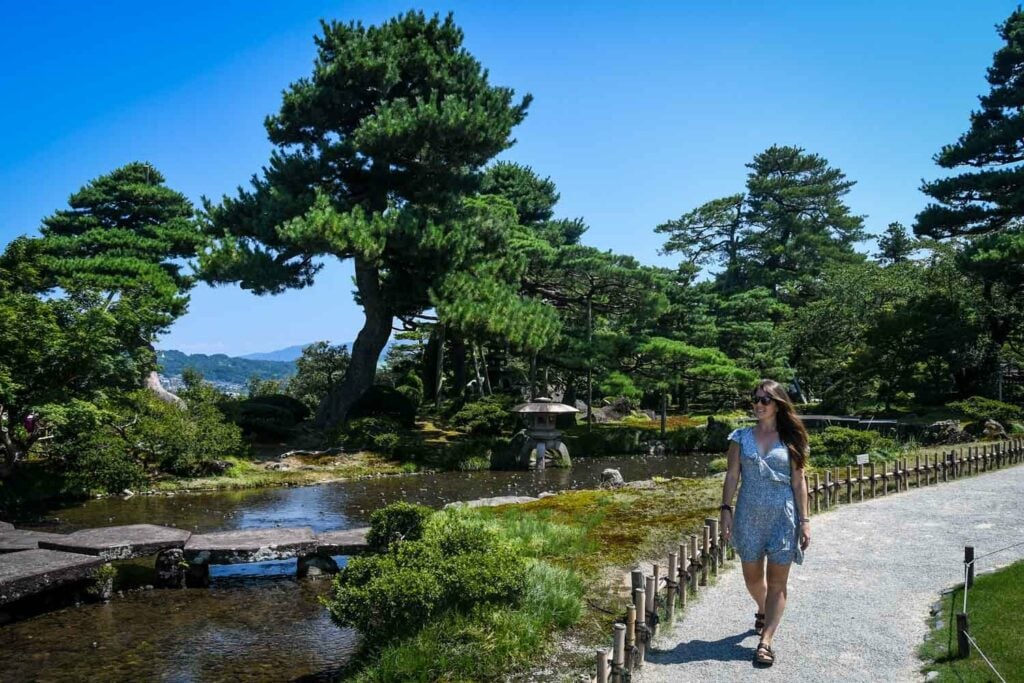
- Location: Kanazawa
- Google Maps location
One of the Three Great Gardens of Japan, this tranquil oasis holds all six attributes that, according to Chinese landscape theory, create the perfect garden: spaciousness, seclusion, artificiality, antiquity, abundant water, and broad views.
You could spend hours finding your zen in every feature of Kenrokuen Garden, such as ponds, waterfalls, tea houses, streams, bridges, hills, and stone paths.
While you’re roaming, keep an eye out for these significant locations:
- Kotoji Toro Lantern: a uniquely built lantern on two legs, the symbol of the garden
- Kasumigaike Pond: holds one of the oldest fountains in Japan
- Seison-kaku Villa: traditional Japanese villa built in 1863
- Kanazawa Castle: the former residence of the Maeda family, one of the most powerful in Japan that created the garden over hundreds of years
Entry fee: 320 yen ($2.50 USD), free during early admission hours
27. Kobe Port
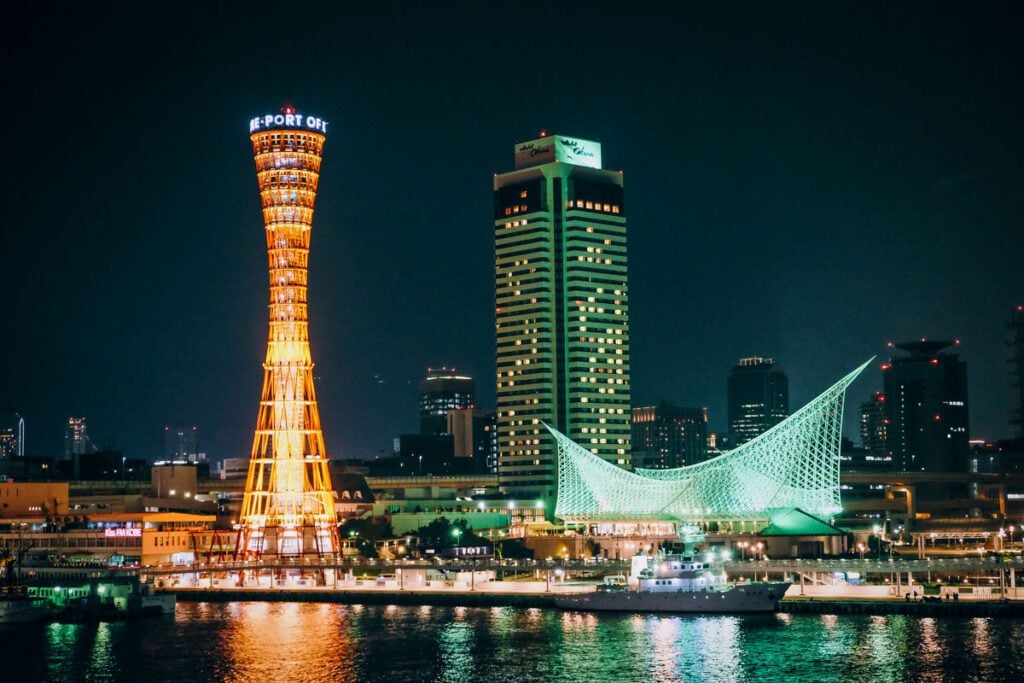
- Location: Kobe
- Google Maps location
The city of Kobe best known, of course, for its namesake beef and the infamously high price tag that comes with it. But its harbor, nestled between the bay and the foot of Mt. Rokko, is also one of Japan’s important landmarks.
Kobe Port was one of the first to open up Japan to international trade following the country’s isolationist Edo Period. It’s still one of Japan’s busiest shipping ports to this day.
The skyline is defined by Kobe Port Tower, which resembles the traditional hourglass-shaped drums used in kabuki theater, as well as the Kobe Maritime Museum, the roof of which resembles the sail of a ship.
Both Kobe Port Tower and the Maritime Museum are illuminated at night, creating a colorful cityscape that is one of Japan’s best nighttime views.
Round up of Japan landmarks
Here’s a recap of all the iconic Japanese landmarks on our list so you can see everything in one place.
- Mount Fuji
- Fushimi Inari
- Omoide Yokocho and Golden Gai
- Nachi Waterfall
- Shirakawa-go
- Jigokudani Snow Monkey Park
- Shibuya Crossing
- Itsukushima Shrine
- Arashiyama Bamboo Grove, Kyoto
- Daibutsu (“Great Buddha”) (Kamakura)
- Osaka Castle
- Kinkaku-ji (“Golden Pavilion”)
- Nara Park
- Senso-ji, Tokyo
- Philosopher’s Path
- Meiji shrine
- Himeji Castle
- Chureito pagoda
- Hiroshima Peace Memorial
- Dōtonbori, Osaka
- Machiya, Kyoto
- Tokyo Tower
- Kegon Falls
- Yayoi Kusama’s giant pumpkin sculpture in Naoshima
- Tōdai-ji (Nara)
- Kenrokuen Garden
- Kobe Port
Plan your trip to Japan
After 3 trips (and counting!), we’ve fallen head over heels for Japan—and we’ve created TONS of resources to help you plan your dream trip. Start with our Ultimate Japan Travel Guide and be sure to check out these helpful articles:
- First time? Our Japan Trip Planner walks you through everything you need to know.
- Use our Japan Rail Pass guide to determine if getting a train pass is optimal for your trip.
- Here’s our curated list of the best things to do in Japan—from iconic sights to once-in-a-lifetime experiences.
- Not sure where to go? Our Japan itinerary ideas will help you map it all out.
- Foodies, rejoice! This guide to what to eat in Japan will have you drooling before you land.
- This guide to what to wear in Japan (and what not to wear) will help you blend in.
- Use our ultimate Japan Packing List to make sure you don’t forget anything.
- Before you go, brush up on these essential Japan travel tips (including major do’s and don’ts!).
- Avoid awkward moments by brushing up on Japanese etiquette.
Still have questions? Drop us a comment—we LOVE helping travelers plan unforgettable trips to Japan!
Perfect Japan itinerary
Want the perfect itinerary planned for you?

If you don’t have a ton of time to spend planning your Japan itinerary (or you just don’t find travel planning fun), we’ve got something you might be interested in…
We created the ultimate done-for-you Japan itinerary that is packed full of all sorts of tips we’ve gathered from 3 trips to Japan as well as literally hundreds of hours of research (no exaggeration).
We have both an off-the-beaten path route as well as a classic itinerary that hits the top attractions (perfect for your first visit to Japan!).
Don’t miss your chance to grab our Japan packing list!
This FREE PDF download includes everything you’re going to want to pack for your Japan trip, including what NOT to bring, plus tons of insider tips!
Just enter your email and we’ll immediately send you access instructions!
Save this article on Pinterest for later!
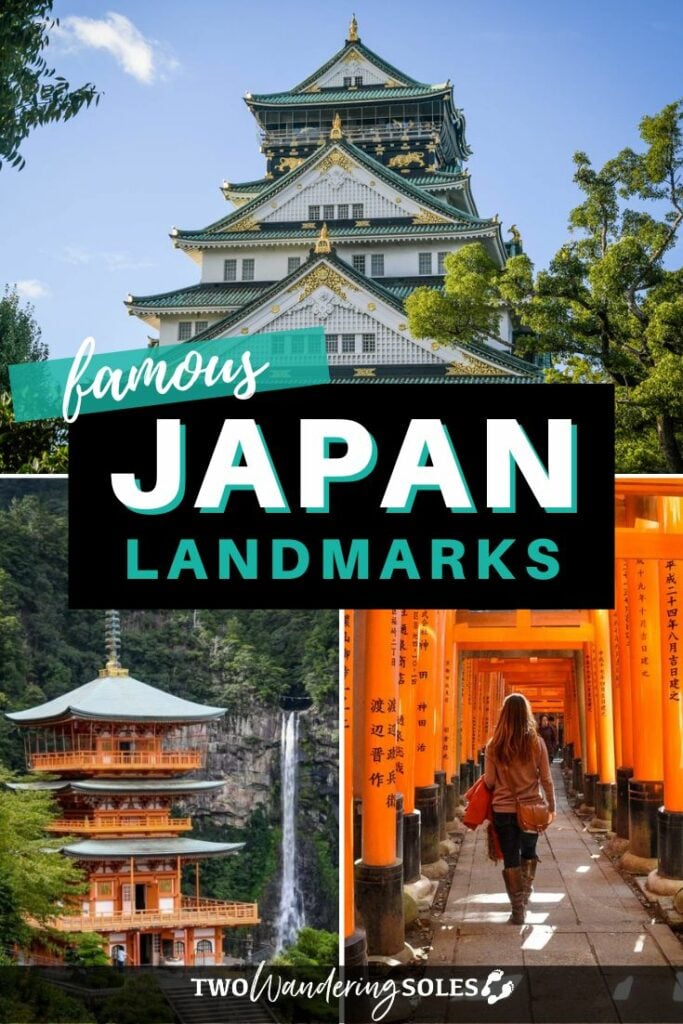
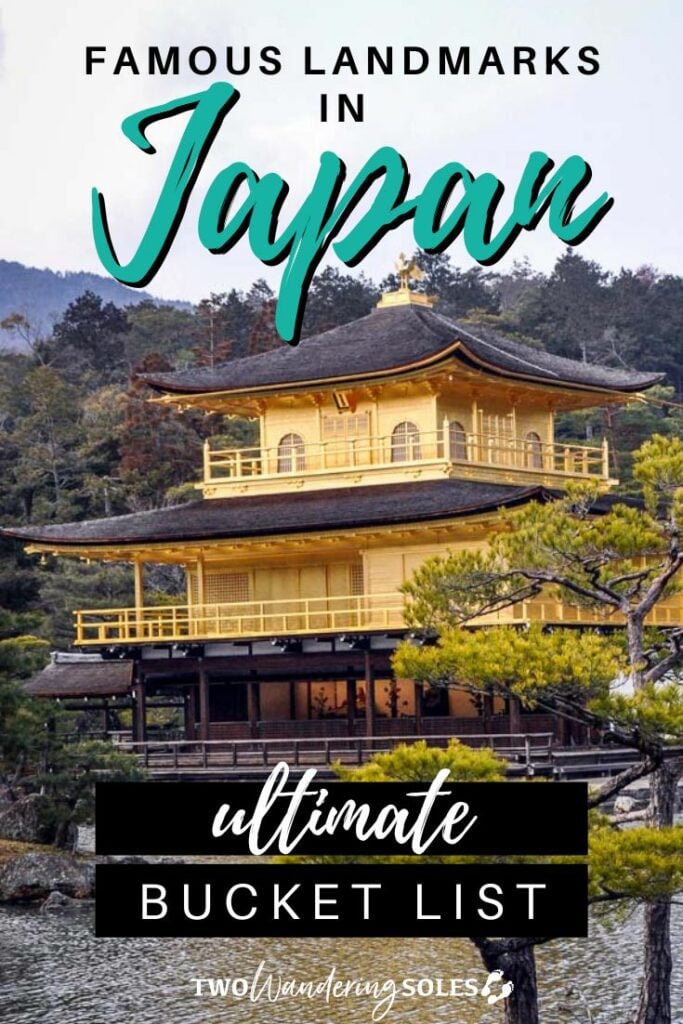
We want to hear from you!
How many of these famous landmarks in Japan have you seen in person? Which ones are next on your bucket list? Let us know in the comments below!


